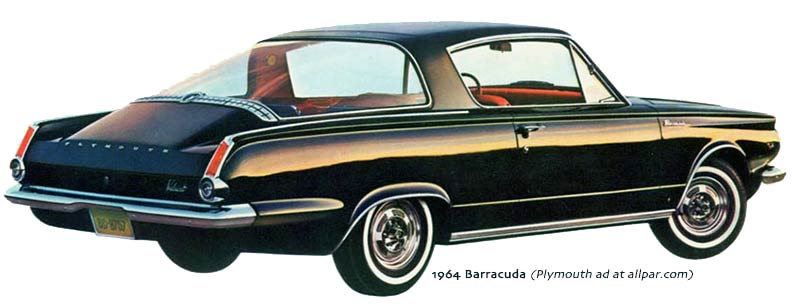Three generations of the Plymouth Barracuda were developed during from 1964 to 1974 model years.
The first generation was a fast back A-body coupe made in 1964 through to 1966.
The Plymouth Barracuda followed the automotive trends in the early to mid 60s, which had U.S manufacturers developing vehicles in a sporty compact size.
Interestingly, Plymouths executives had every intention of calling the car Panda.
However this failed to win over the designers, and eventually John Samsen, a designer for the company, suggested the selected name ‘Barracuda’.
Chryslers A-body Plymouth Valiant was chosen for the main focus of the company’s direction of design.
The Valiant 106 wheelbase and Valiant hood were used on the first generation Plymouth Barracuda, along with headlamp bezels, windshield, vent windows, quarter panels, doors, A-pillar and bumpers. All other glass and metal were new.
Pittburg Plate Glass joined with Chrysler designers to produce the giant back glass which predominately achieved the fastback shape of the car.
It was the largest ever installed on a standard production in the 60s.
1964 Barracuda’s were equipped, and marked the first vehicle to use the smaller “TorqueFlite 6” transmission behind a V8.
As pony cars intensified in the U.S, new options were introduced for the Barracuda to compete with.
Engines were upgraded, 10.5:1 compression, and a more aggressive camshaft, still with solid tappets.
1965 introduced the Plymouth Barracuda with the Formula S package.
This included the Commando V8 engine, upgraded suspension, larger wheels and tires, special emblems, and tachometer gauges.










